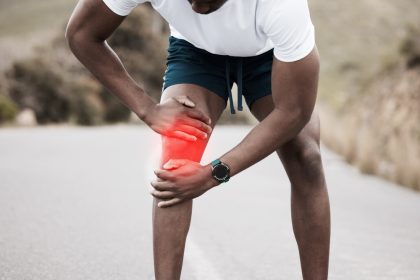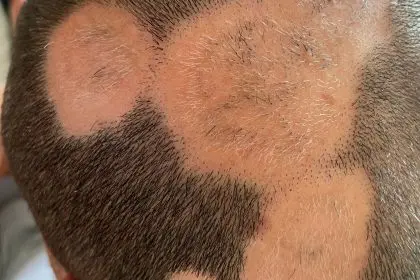For many people, sunlight brings warmth, energy and improved mood. For those living with lupus, however, that same sunshine represents a serious health hazard that can trigger debilitating symptoms. Understanding how and why sunlight affects lupus patients differently proves crucial for both managing the condition and educating others about this often-invisible aspect of the disease.
The science behind lupus photosensitivity
Lupus, an autoimmune disease where the body’s immune system mistakenly attacks healthy tissues, affects multiple organ systems including skin, joints, kidneys and brain. Among its most challenging aspects is photosensitivity – an abnormal reaction to ultraviolet light that affects approximately two-thirds of lupus patients.
Unlike the general population who might develop a tan or sunburn from extended sun exposure, individuals with lupus often experience profound systemic reactions. UV rays, particularly UV-A and UV-B, penetrate skin cells and alter cellular DNA. While healthy immune systems typically repair this damage without incident, in lupus patients this cellular alteration triggers an aggressive immune response.
This heightened reactivity causes the immune system to produce increased autoantibodies – proteins that mistakenly target the body’s own tissues. The resulting inflammation can affect not just sun-exposed skin but potentially the entire body, explaining why seemingly minor sun exposure can trigger widespread symptoms.
The reaction varies significantly between patients. Some develop immediate responses within minutes of exposure, while others experience delayed reactions appearing days later, making it difficult to connect symptoms with their true cause.
How sunlight exposure manifests in symptoms
The visible manifestations of photosensitivity often include distinctive skin reactions. The most recognizable is the butterfly-shaped rash (malar rash) that spreads across the cheeks and bridge of the nose. Other patients develop discoid lesions – thick, scaly patches that can leave permanent scarring if untreated.
Beyond skin involvement, sunlight exposure frequently triggers systemic flares that affect the entire body. These episodes can include debilitating fatigue, joint pain, fever and increased inflammation in internal organs. For many patients, even brief unprotected sun exposure can lead to days or weeks of increased disease activity requiring medical intervention.
What makes these reactions particularly challenging is their unpredictability. The same exposure that causes minimal issues one day might trigger a serious flare another time, depending on overall disease activity and other factors. This inconsistency forces many patients to adopt consistently cautious approaches to sun protection regardless of how they feel on any particular day.
The duration between exposure and symptom onset further complicates management. While some experience immediate skin reactions, others might not develop systemic symptoms until several days later, creating a disconnect between cause and effect that makes learning protective behaviors more difficult.
Daily challenges of navigating a sunlit world
Living with photosensitive lupus requires constant vigilance and strategic planning that most people never consider. Simple activities like running errands, commuting to work, or attending outdoor social events require careful preparation and timing.
Protective measures become non-negotiable parts of daily life. High-SPF, broad-spectrum sunscreen application becomes a routine repeated multiple times daily. Specialized UV-protective clothing, wide-brimmed hats and sunglasses transform from fashion choices into medical necessities. Many patients monitor daily UV index forecasts with the same attention others give to temperature or precipitation.
These precautions extend beyond obvious sunny days. UV rays penetrate cloud cover and reflect off surfaces like water, snow and concrete, creating risk even during overcast weather. Window glass blocks UV-B rays but allows UV-A transmission, meaning that even driving or sitting near windows requires protection.
The practical implications reshape everyday life. Patients frequently rearrange schedules to avoid peak sunlight hours, choose jobs that limit outdoor exposure, and modify homes with UV-filtering window films. These constant adaptations represent significant lifestyle adjustments that impact nearly every aspect of daily living.
The emotional and social impact
Perhaps the most overlooked aspect of photosensitivity involves its profound social and emotional effects. Declining outdoor gatherings, wearing protective clothing during hot weather, or requesting shade accommodations often draws attention or questions from others who don’t understand the medical necessity behind these choices.
Many lupus patients report feeling isolated from social activities centered around outdoor recreation – beach trips, sporting events, picnics and outdoor celebrations. The constant need to explain their limitations proves emotionally exhausting, particularly when met with skepticism or dismissive attitudes about “just getting some sun.”
For children and young adults with lupus, these restrictions can feel particularly isolating. Missing school activities, limiting sports participation, or being unable to join peers for spontaneous outdoor gatherings creates separation during formative social development years.
The invisible nature of this sensitivity presents unique challenges. Because most people associate sun protection with preventing sunburn or skin cancer rather than systemic illness, they may perceive lupus patients’ precautions as excessive. This lack of understanding compounds feelings of isolation and can contribute to anxiety and depression.
Adapting environments and expectations
Managing photosensitivity requires not just individual adaptations but environmental modifications and community education. Workplaces, schools and public spaces increasingly recognize the need for accommodations like window filters, shade structures and indoor alternatives for required activities.
Educational institutions play crucial roles in supporting young lupus patients. This includes allowing flexible scheduling around outdoor activities, providing shaded areas during recess, and educating staff about the serious medical nature of photosensitivity rather than treating sun avoidance as personal preference.
Families and social circles can significantly impact quality of life through thoughtful planning. Scheduling gatherings during evening hours, choosing indoor or shaded venues, and normalizing sun-protective behaviors as group activities rather than individual restrictions makes inclusion possible without drawing unwanted attention to differences.
Technological advances continue improving management options. Newer sun-protective fabrics offer lightweight, breathable alternatives to the heavy clothing previously required. UV detection devices and smartphone apps help monitor environmental exposure risks. Specialized sunscreens developed for sensitive skin address the common problem of reactions to traditional sun protection products.
Medical management approaches
Healthcare providers increasingly recognize photosensitivity as a serious medical issue requiring comprehensive management strategies. Beyond recommending protective behaviors, treatment plans often include medications aimed at reducing reactivity to sunlight.
Antimalarial drugs like hydroxychloroquine have shown effectiveness in decreasing photosensitivity for many patients. These medications work by reducing immune system hyperactivity and can diminish both the frequency and severity of sun-induced flares.
Topical treatments including corticosteroids and calcineurin inhibitors help manage skin manifestations when they occur. For patients with severe photosensitivity, systemic immunosuppressants sometimes become necessary to control reactions that cannot be prevented through avoidance alone.
Regular monitoring helps track patterns and effectiveness of interventions. Many patients maintain symptom journals documenting exposures and reactions, helping identify specific triggers and effective prevention strategies. This personalized approach recognizes the considerable variation in individual sensitivity.
Creating awareness and fostering understanding
Public education about photosensitivity in lupus remains crucial for improving patients’ quality of life. While awareness of lupus has improved, the specific challenge of photosensitivity often remains poorly understood even among those familiar with the disease’s existence.
Support groups, both in-person and online, provide valuable spaces where patients share strategies and experiences without needing to justify their concerns. These communities reduce isolation while offering practical advice for navigating specific challenges like travel, work accommodations, or social situations.
For newly diagnosed patients, education about photosensitivity must begin immediately rather than after experiencing severe reactions. Early adoption of protective habits helps prevent the damage that can occur before patients recognize their individual triggers and sensitivity patterns.
Finding new ways to experience light
Living well with photosensitive lupus involves not just limiting sun exposure but finding alternative ways to enjoy light and outdoor environments. Evening outings, early morning activities, and strategic use of shade allow modified participation in outdoor life rather than complete avoidance.
Indoor pursuits like museums, theaters and libraries offer social and recreational opportunities without sun exposure risks. Vacation planning might focus on destinations with lower UV indexes, abundant indoor activities, or timing trips during seasons with shorter daylight hours.
For those with severe photosensitivity, technological alternatives provide connections to natural environments. Virtual reality nature experiences, indoor light therapy using specific wavelengths, and simulated outdoor environments offer some benefits of nature exposure without UV risk.
Despite necessary limitations, most lupus patients find adaptations that allow them to experience joy, connection and activity. The key lies in recognizing photosensitivity as a serious medical concern requiring meaningful accommodations rather than a preference to be ignored or minimized.
For lupus patients, avoiding harmful sun exposure represents not just a protective health measure but an essential medical intervention as important as any medication. Creating environments that recognize and accommodate this reality ensures that those living with lupus can participate fully in life without endangering their health in the process.
This story was created using AI technology.














